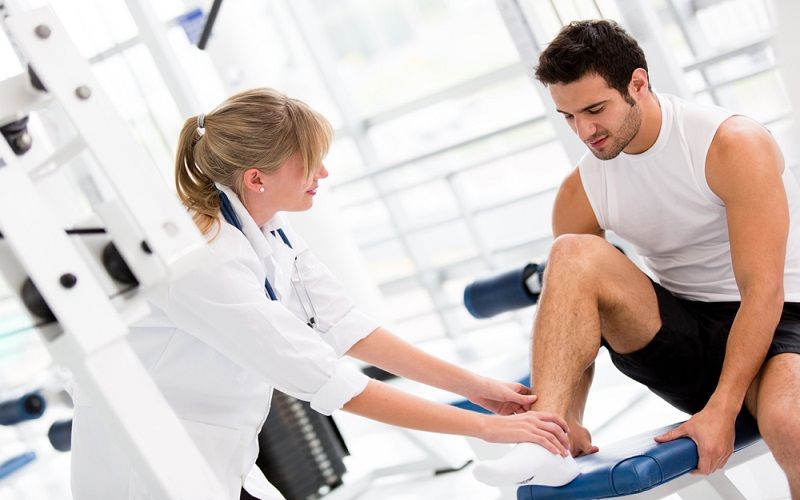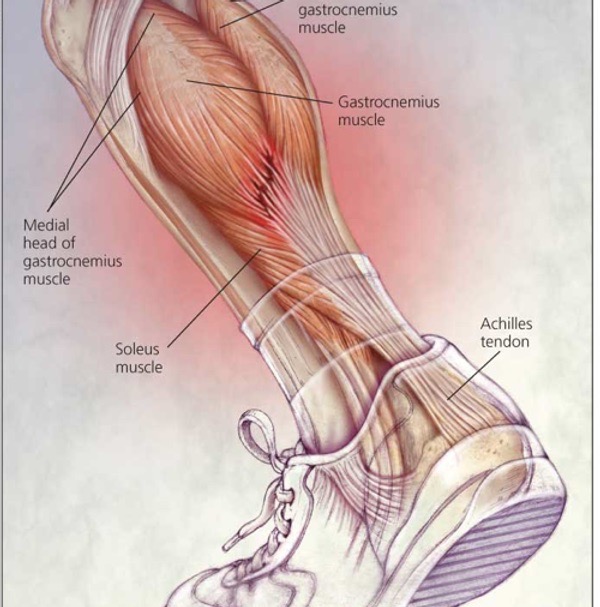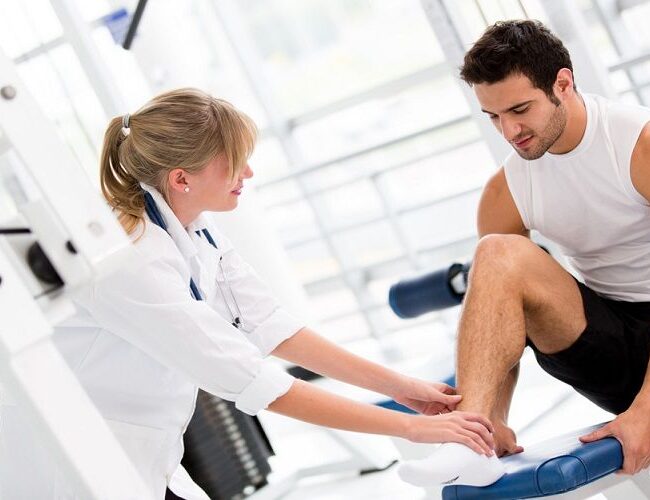- Sports Med U Newsletter
- Posts
- Chilling Truths: Cryotherapy's Role in Injury Recovery and Exercise Performance ❄️🏋️♂️
Chilling Truths: Cryotherapy's Role in Injury Recovery and Exercise Performance ❄️🏋️♂️
Sports Med U | Educating Minds, Elevating Potential
The cold truth: the role of cryotherapy in the treatment of injury and recovery from exercise
Kwiecien, S.Y. and McHugh, M.P., 2021. The cold truth: the role of cryotherapy in the treatment of injury and recovery from exercise. European journal of applied physiology, 121(8), pp.2125-2142.
In today’s letter
Overview of the Potential Effects of Dynamic Stretching on Injury Incidents
Analogy for cold exposure affects
Rapid Results = This narrative review concludes that
a) Cold application instantly can assist in faster recovery
b) Cold exposure is not recommended after exercise if your goal is to increase performance
c) Use cold exposure to reduce soreness post-exercise if the goal is to recover and not increase muscular performance
Professional take away = Aim to ice acute injury ASAP
Bite-size study – Infographic style!

Deeper look
Aim of study
This review will help explain and sum up the latest evidence about how cryotherapies can help with treating injuries and recovering after exercise. It will also give practical advice based on this evidence
Background info
Cryotherapy, a method to lower body tissue temperature by removing heat, has been used in injury treatment for centuries.
Injury can result from a direct insult to an area, like blunt force trauma.
Structural muscle damage can occur through mechanical stress when there's an excessive mechanical load per muscle fiber, especially during eccentric contractions.
Prolonged or intense exercise, like marathon running, can cause metabolic stress, where initial damage is due to metabolic issues making muscle fibers more vulnerable to mechanical stress.
During exercise, an increase in temperature indirectly leads to structural damage through a rise in metabolic rate and other changes in a cell environment

The muscle fiber undergoes a natural process of recovery, returning to its pre-exercise state, depending on the extent of activity/metabolic stress on the cell.
Cryotherapy can be useful in reducing initial damage during the secondary stage of cellular response.
ICE (Ice, Compression, Elevation) therapy and its variations have a long history in injury management.
Despite its widespread use, there's limited scientific evidence supporting the use of ICE protocol.
In recent literature, there's a growing trend discouraging icing injuries to allow for the body's natural healing response, leading to debates among clinicians.
Various cryotherapy methods, including whole-body cryotherapy, cold-water immersion, and phase change material, are commonly found in athletic training centers, spas, and homes, offering different levels of convenience and cost.
While there is ongoing research on the molecular response to cryotherapy, there is no consistent and unanimous evidence, causing controversy over the effectiveness of most cryotherapy treatments for both injuries and exercise recovery.
NO METHOD WAS PROVIDED

Discussion key points
The effects of cryotherapy interventions on metabolism and inflammation
Cryotherapy has a long-held belief in reducing metabolism and inflammation after acute structural trauma by lowering the temperature and blood flow at the injury site, thus suppressing metabolic demand and inflammation.
The scientific foundation for using cryotherapy to decrease metabolism and inflammation in both injury and exercise recovery is primarily derived from animal studies.
Translating findings from animal studies to humans presents challenges for clinicians and athletes because rodent muscles have different metabolic properties and responses to environmental factors compared to human skeletal muscles.
Cryotherapy has been applied in human contexts following injury and exercise, aiming to lower metabolism and dampen inflammation based on evidence from animal models.
However, it remains unproven whether cryotherapy can effectively reduce muscle metabolism in humans.
The effects of cryotherapy interventions on tissue temperature
Traditionally, cryotherapy's mechanisms were thought to rely on the cold-induced vascular response, reducing muscle blood flow and thereby decreasing muscle metabolism, inflammation, and subsequent damage.
Recent findings suggest that cryotherapy's effectiveness in recovery primarily depends on lowering muscle temperature, rather than affecting muscle blood flow.
Musculoskeletal injuries typically cause localized structural damage and don't directly raise the body's temperature systemically.
Cryotherapy methods capable of influencing systemic changes are more effective for recovery after high-thermal-load exercise.
For exercise with minimal thermal impact, local cold application with ice may only affect tissue temperature locally, which could be sufficient for recovery in such cases.
The variation in tissue temperature change across different layers (skin, fat, superficial, deep muscle) is often overlooked by clinicians, practitioners, and athletes. Skin and superficial tissues reach lower temperatures than deep muscle during cryotherapy, impacting muscle recovery.
The skin initiates thermoregulatory responses in muscles since muscles lack thermal receptors. Deep muscle tissue loses heat mainly to superficial muscle tissue during skin cooling.
Gel packs may initially be colder and reduce skin temperature faster compared to ice or frozen peas, but reducing skin temperature without affecting deep muscle temperature won't induce significant changes in muscle metabolism or inflammation and could lead to cold-related injuries.
Cryotherapy modalities used for recovery from injury and exercise
Cryotherapy, typically in the form of an ice pack, is commonly used to treat and aid recovery from strains, sprains, contusions, fractures, and immediate post-acute musculoskeletal soft tissue injuries.
Traditionally, ice is applied right after an injury to provide immediate pain relief by slowing down nerve conduction.
When applied in the management of acute soft tissue injuries or after surgery, cryotherapy may potentially enhance outcomes by reducing bleeding and secondary cell damage, but only if administered promptly after the injury occurs.
However, there is no conclusive evidence from controlled trials supporting its use for expediting recovery following musculoskeletal injuries in humans.

A recent meta-analysis found that using ice as a form of local cryotherapy does not reduce soreness or speed up strength recovery after exercise.
Whole-body cryotherapy, involving brief exposure to extremely cold air (−110 °C to −140 °C) while minimally dressed, has gained popularity as a recovery method following intense training and competition

Extensive reviews have examined the physiological, neuromuscular, and perceptual impacts of whole-body cryotherapy as a means to hasten post-exercise recovery.
Research suggests that whole-body cryotherapy can effectively enhance the perceived recovery from soreness after exercise.

Meta-analyses have shown that cold-water immersion offers clear, albeit limited, benefits in reducing soreness for up to 96 hours after exercise.
Additionally, some evidence supports the use of cold-water immersion in reducing blood markers associated with muscle damage
Differences in outcomes can be attributed to variations in the temperature and duration of cold-water immersion protocols used in various studies.
Dubois and Esculier (2020) propose that cryotherapy, particularly ice, might hinder inflammation, potentially impeding tissue repair and excessive collagen synthesis. However, their argument relies solely on evidence from animal models.

Evidence for the detrimental effects occurring during and from cryotherapy interventions
Inflammation post-injury or strenuous exercise has both positive and negative aspects, causing secondary tissue damage while also aiding in the repair and function restoration of damaged tissues.
There is a growing trend in literature advising against icing to avoid potential delays or impairments in the regeneration process and the body's natural healing response after injury and exercise.
However, it's crucial to emphasize that similar detrimental effects on the healing process in humans have not been conclusively demonstrated.
It has been observed that cryotherapy, especially cold water immersion, can have negative impacts on muscle mass and strength gains and can hinder muscle protein synthesis rates when used regularly in post-exercise routines.
This effect has been linked to cryotherapy-induced reductions in intramuscular temperature, which hinder the anabolic response triggered by glutamine.
While evidence supports the detrimental effects of cryotherapy on chronic adaptation, using cryotherapy acutely for six consecutive hours does not seem to interfere with the naturally occurring adaptive mechanism known as the repeated bout effect.
After an initial bout of eccentric exercise, there is minimal change in intramuscular inflammation markers, but a second bout results in significant increases in multiple proinflammatory cytokines and notable macrophage and T-cell infiltration.
These findings suggest that repeated use of cold water immersion over time hampers recovery after traditional resistance training. Still, a single phase change material cooling treatment following one exercise bout does not compromise the adaptation that provides protection against damage in subsequent eccentric exercise bouts.
Concluding remarks
Traditional cryotherapy modalities have generally been shown to provide pain relief when applied following soft tissue injury and to reduce soreness when applied after damaging exercise
The primary goal of cryotherapy should be to maintain a reduction in intramuscular temperature for as long as possible in the immediate stages following both injury and exercise to hinder the proliferation of secondary damage.
Recent studies showing no adverse events indicate that prolonged cooling with PCM may be a safe and practical alternative to traditional short-duration cryotherapy modalities.
Clinical use
Athletes should primarily consider cryotherapy during the regular season when anabolic training adaptations are not the focus. Instead, the aim is to facilitate recovery and prevent muscle breakdown following strenuous exercise bouts.
In scenarios with multiple games close together or an evening game followed by a morning practice, expediting recovery takes precedence over muscle adaptation.
Immediate Application: Apply cryotherapy as soon as possible after injury or exercise to reduce inflammation and manage pain effectively.
Time of application: It seems like 15-25 minutes of cold exposure 2/3x a day post-injury may have beneficial results in terms of pain levels and potential recovery time
Full body Cold immersion straight after Exercise: This is not recommended as it will blunt the hormonal and cellular responses to mechanical load. Unless the athlete has competition close by and the goal is to feel as fresh as possible
Cold immersion for reducing muscle soreness: Recommended for in-season athletes when preparing for a competition/match which is 24/72 hours away as it will help with soreness, but is not recommended if seeking to improve performance as mentioned above.
Meme of the week

What’s new in sports Med U
Like what you see?
Check out our articles!



Reply